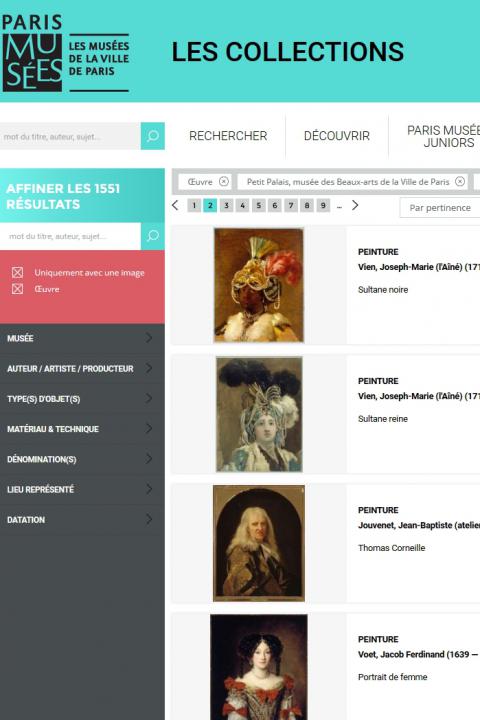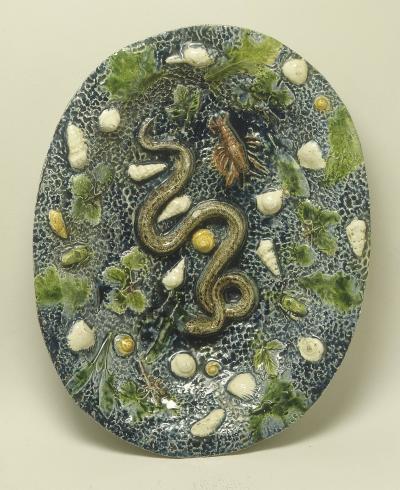Known since the Middle Ages, the “varnished” earthenware technique increased greatly in popularity in Renaissance France. The term refers to a clay-based ceramic covered with a lead-based glaze which is translucent and coloured with metal oxides.
The most spectacular pieces are those with incredibly precise renderings of plants, shells and marine animals. They are traditionally linked to the famous potter Bernard Palissy (1510-1590), a genius ceramic artist who earned the title of “Inventor of the King's Rustic Figulines" in 1563. They were still being made in the 17th century, which is probably when the large dish at the Petit Palais was made.
No doubt ostentatiously displayed on sideboards, they are a wonderful illustration of the Renaissance Princes’ taste for strangeness and technical virtuosity.

City of Paris municipal collection's website
The collections portal can be used to search the collections of Paris’s 14 municipal museums (approximately 336,000 works, including 43,000 belonging to the Petit Palais).
It is also possible to download around 12,000 images of the museum’s works free of charge.
Access the Museums of the City of Paris collections portal
Extern databases
Discover a selection of databases online presenting works from the Petit Palais or documents concerning the history of the museum.

